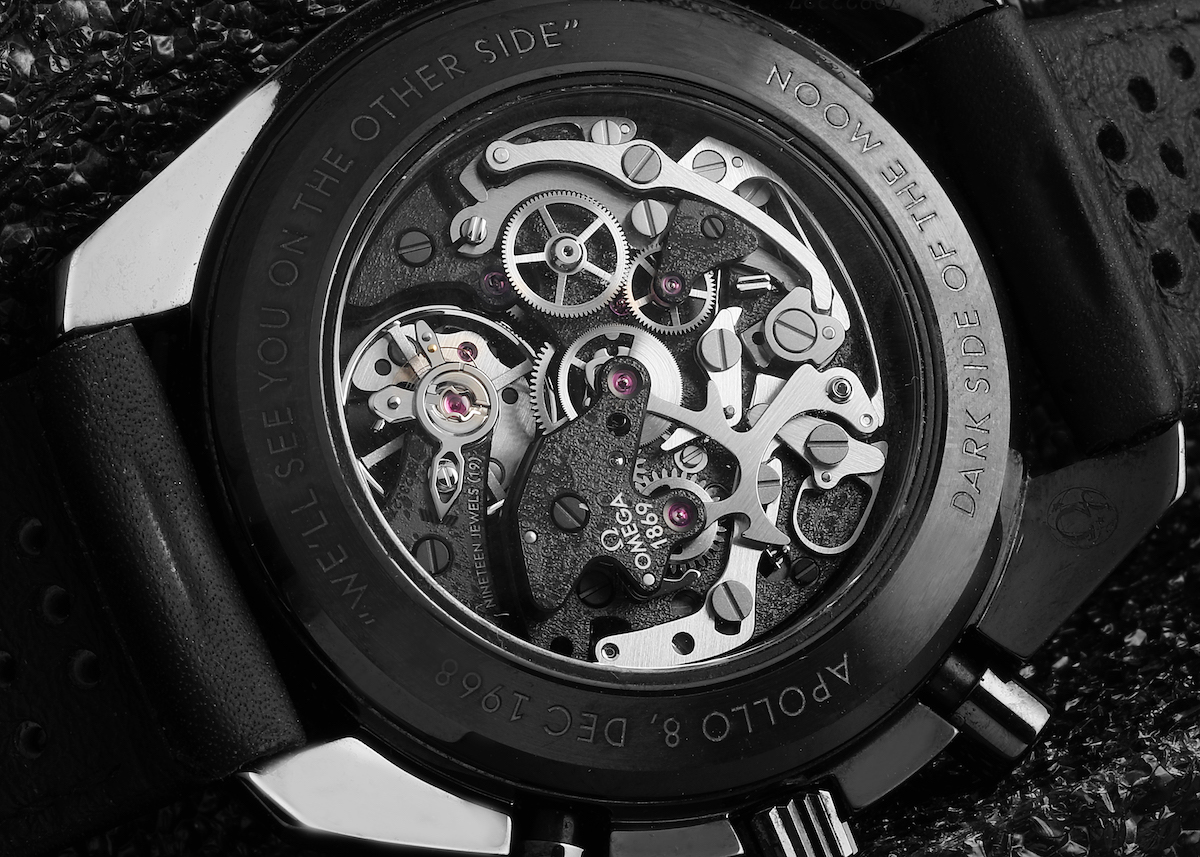A mechanical watch is a marvel of craftsmanship and engineering, consisting of numerous intricate parts working in harmony to keep time. While digital watches have simplified timekeeping, it is the complexity and craftsmanship of mechanical watches that make them truly special. If you are new to mechanical watches and want to understand how they work, this watch anatomy guide will provide an overview of the various components and their functions.
<>
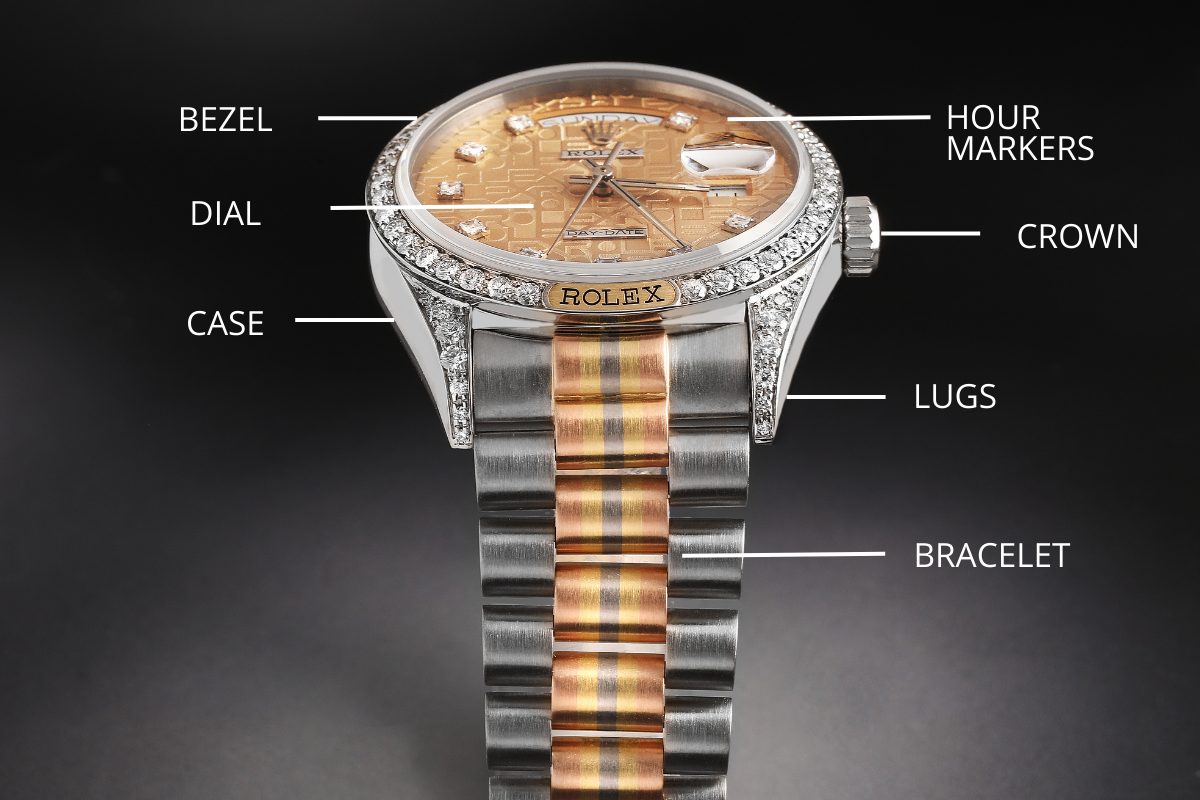
The Basic Parts of a Watch
Bezel
The bezel is the ring surrounding the watch’s crystal, which can be rotated or fixed. It serves functional purposes, but for some watches it’s purely aesthetic. In some watches, the bezel can be rotated to track elapsed time or to measure intervals. In others, it is stationary and adds a decorative element to the watch’s design.
Bracelet or Strap
The bracelet or strap is the band that secures the watch to your wrist. It can be made of various materials such as stainless steel, leather, rubber, or fabric. The choice of bracelet or strap depends on personal preference and the watch’s intended use.
Case
The case is the outer shell that houses the movement, dial, and other components. It provides protection to the delicate internal mechanisms of the watch. Cases are typically made of stainless steel, precious metals like gold or platinum, or even high-tech materials like ceramic or titanium. Read more: Watch Case Shapes: How Many Do You Know?
Crown
The crown is a small knob on the side of the watch used for setting the time, date, and other functions. It is often adorned with a logo or other decorative elements. By pulling the crown out or pushing it in, you can adjust various settings on the watch.
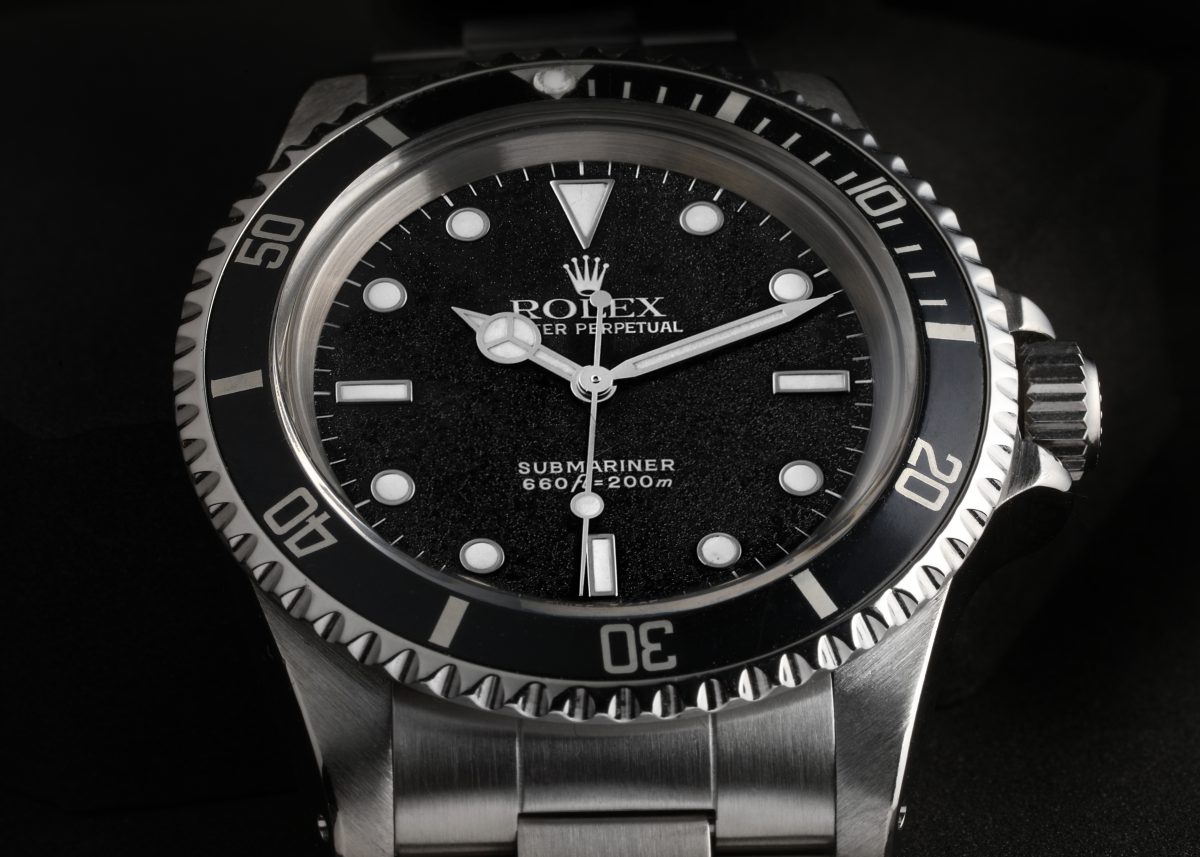
Crystal
The crystal is the transparent cover that protects the dial and hands. There are different types of crystals used in watches:
Synthetic Sapphire: Known for its exceptional hardness and scratch resistance, synthetic sapphire crystals offer superior clarity and durability
Mineral: Mineral crystals are made from hardened glass and provide good scratch resistance at a more affordable price compared to synthetic sapphire.
Acrylic: Acrylic crystals are lightweight and shatter-resistant. They were commonly used in vintage watches but are less prevalent in modern timepieces.
Dial
The dial, also known as the face, is the main part of the watch where the time is displayed. It features hour markers, numerals, or indices to indicate the hours, minutes, and sometimes seconds. The dial can come in various designs, colors, and finishes to suit different styles.
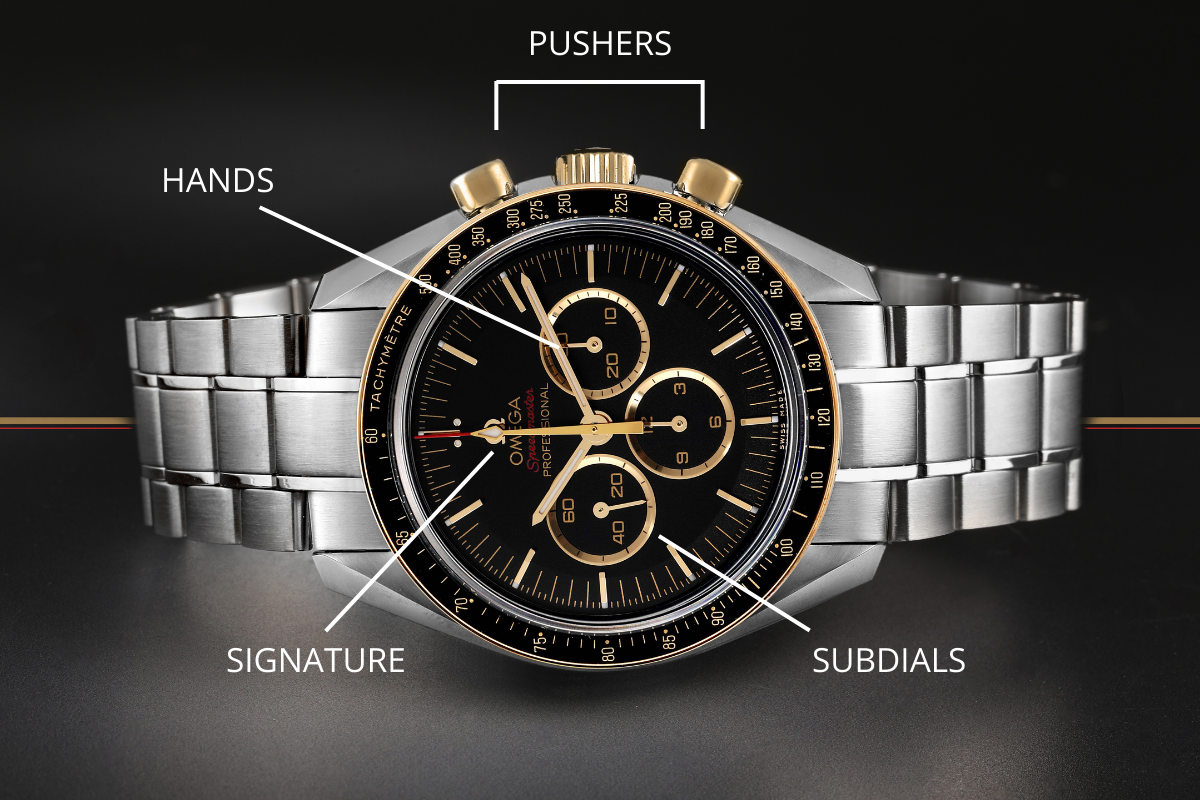
Subdial
A subdial is a smaller dial found within the main dial. It serves various purposes, such as displaying additional complications like a chronograph (stopwatch) function, moon phase indicator, or a second time zone.
Hand
The hands are the moving pointers on the dial that indicate the hours, minutes, and seconds. They are typically made of metal and can come in different shapes and styles.
Hour Marker
Hour markers are used in conjunction with the hands to indicate the hours. They can be in the form of numerals, indices, or even applied markers made of different materials like metal, luminescent material, or gemstones. Read more: Watch Hour Marker Types
Lug
Lugs are the projections on either side of the watch case that connect the case to the bracelet or strap. They provide a secure attachment point for the bracelet or strap and can also contribute to the overall design aesthetic of the watch.
Pusher
Pushers are small buttons found on the side of some watches, typically used to control additional functions like starting, stopping, or resetting a chronograph.
Signature
The signature refers to the brand’s logo or name that is prominently displayed on the dial. It serves as a mark of authenticity and contributes to the watch’s overall aesthetic.
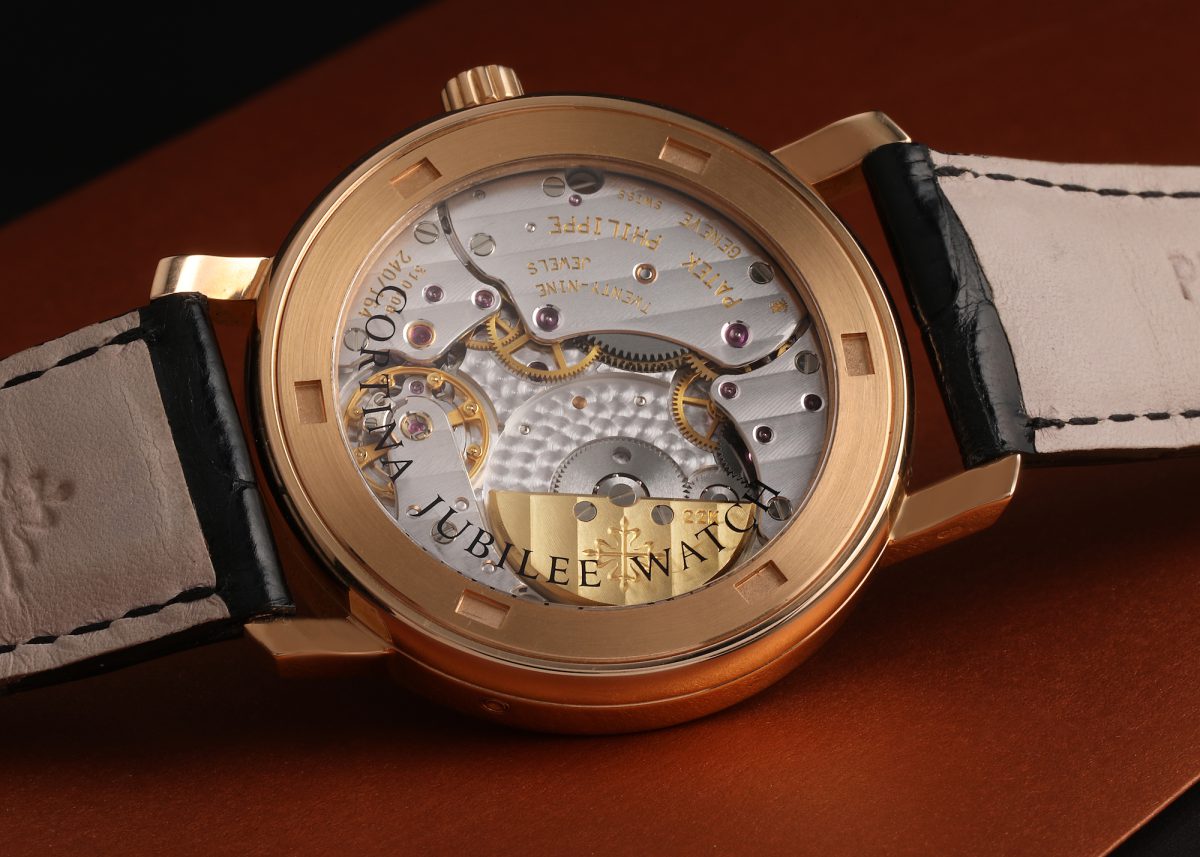
Exhibition Caseback
An exhibition caseback is a transparent back panel on a watch that allows a view of the movement. It can be made of sapphire crystal or another transparent material. Exhibition casebacks are often found in watches that showcase their intricate and finely finished movements.
Movement
The movement, also known as the caliber, is the heart of the watch. It consists of the intricate mechanisms and parts that enable the watch to keep time. There are two main types of watch movements: mechanical and quartz.
Mechanical Movement: Mechanical movements rely on a system of gears, springs, and an escapement to regulate the passage of time. There are two types of mechanical movements: manual-winding and automatic (self-winding) movements.
Quartz Movement: Quartz movements use a battery-powered electronic oscillator regulated by a quartz crystal to keep time. They are known for their accuracy and require minimal maintenance. Read more: Quartz vs Automatic Watches
Rotor
In an automatic (self-winding) mechanical watch, the rotor is a semicircular weight that oscillates with the movement of the wearer’s wrist. The rotor transfers energy to the mainspring, winding it automatically and keeping the watch powered without the need for manual winding.
<>
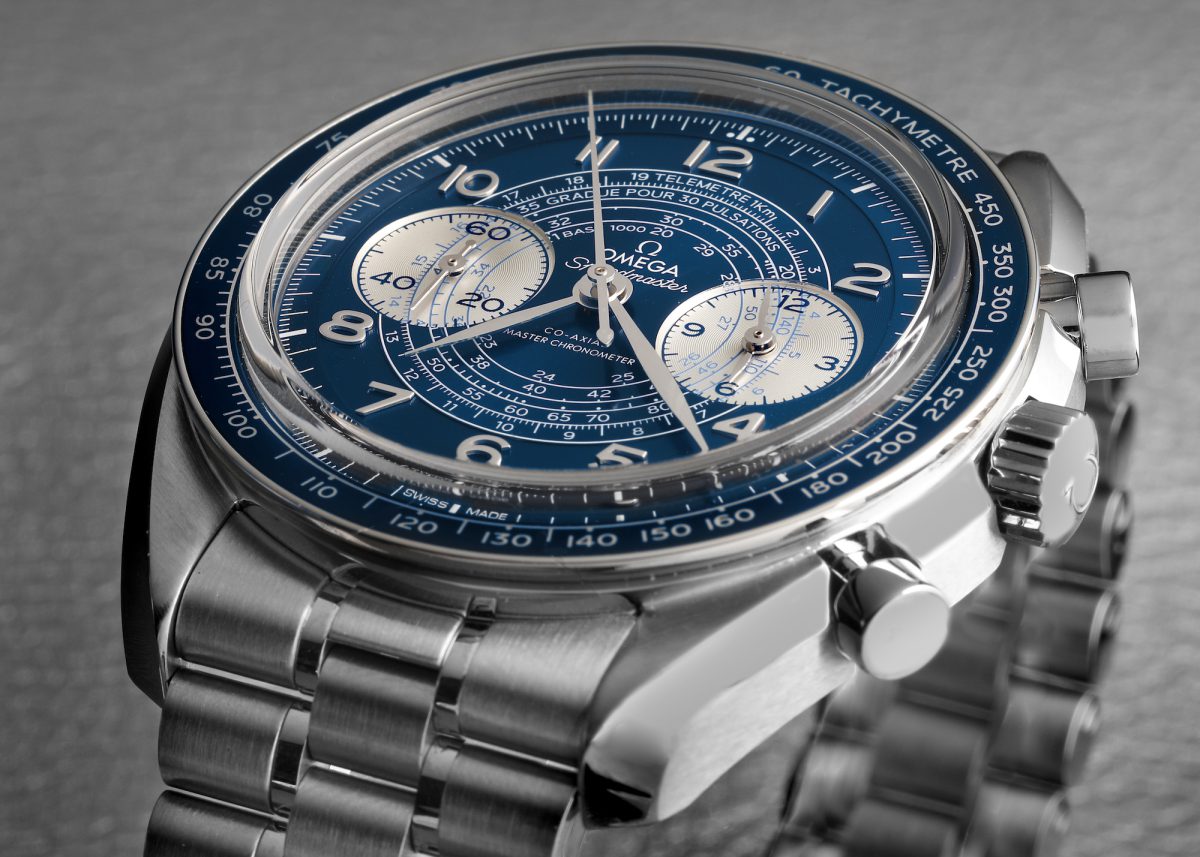
Types of Crystals
Synthetic Sapphire
With the exact same chemical composition as natural sapphire, these lab-grown crystals come with a much smaller price tag. As with most things though, the lower the cost means lower quality. Synthetic Sapphire crystals are incredibly scratch resistant, but are not shatter resistant. Chips and cracks can send microscopic particles into your watch’s movement.
Mineral
Mineral crystals are made from hardened glass and provide good scratch resistance. They are commonly found in mid-range watches and offer a balance between cost and durability. The downside is that any scratched can’t be buffed out during service.
Acrylic
Acrylic crystals were popular in vintage watches and are known for their lightweight and shatter-resistant properties. However, they are more prone to scratching compared to synthetic sapphire or mineral crystals. Acrylic crystals are less commonly used in modern watches but can still be found in certain models.
<>
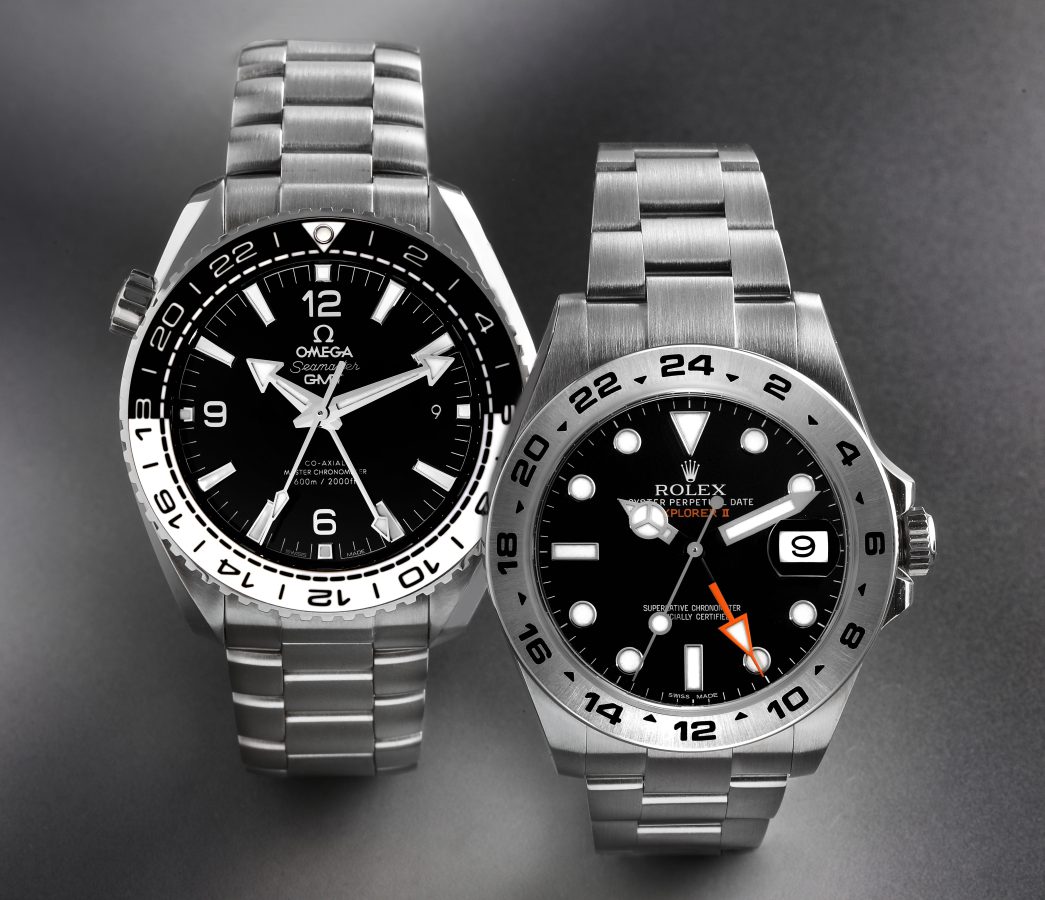
Types of Bezels
Diving Bezel
A diving bezel is a unidirectional rotating bezel found on dive watches. It features markings or numerals that allow divers to track elapsed time underwater. The bezel can only rotate counterclockwise to prevent accidental extension of the dive time. Earlier dive watches used to have bi-directional bezels, but after Blancpain’s patent on it expired in the early 1980s, watchmakers shifted to safe unidirectional bezels.
Timing Bezel
A timing bezel, is just that, it’s used to time. With a bi-directional bezel it can move forward or backward and will time anything you’d like it to, such as time-outs for the kids, cooking, parking meters, and the like.
Aesthetic Bezel
An aesthetic bezel is primarily for decorative purposes, adding style and visual interest to the watch. It can feature various designs, patterns, or gemstones to enhance the overall look of the timepiece.
<>
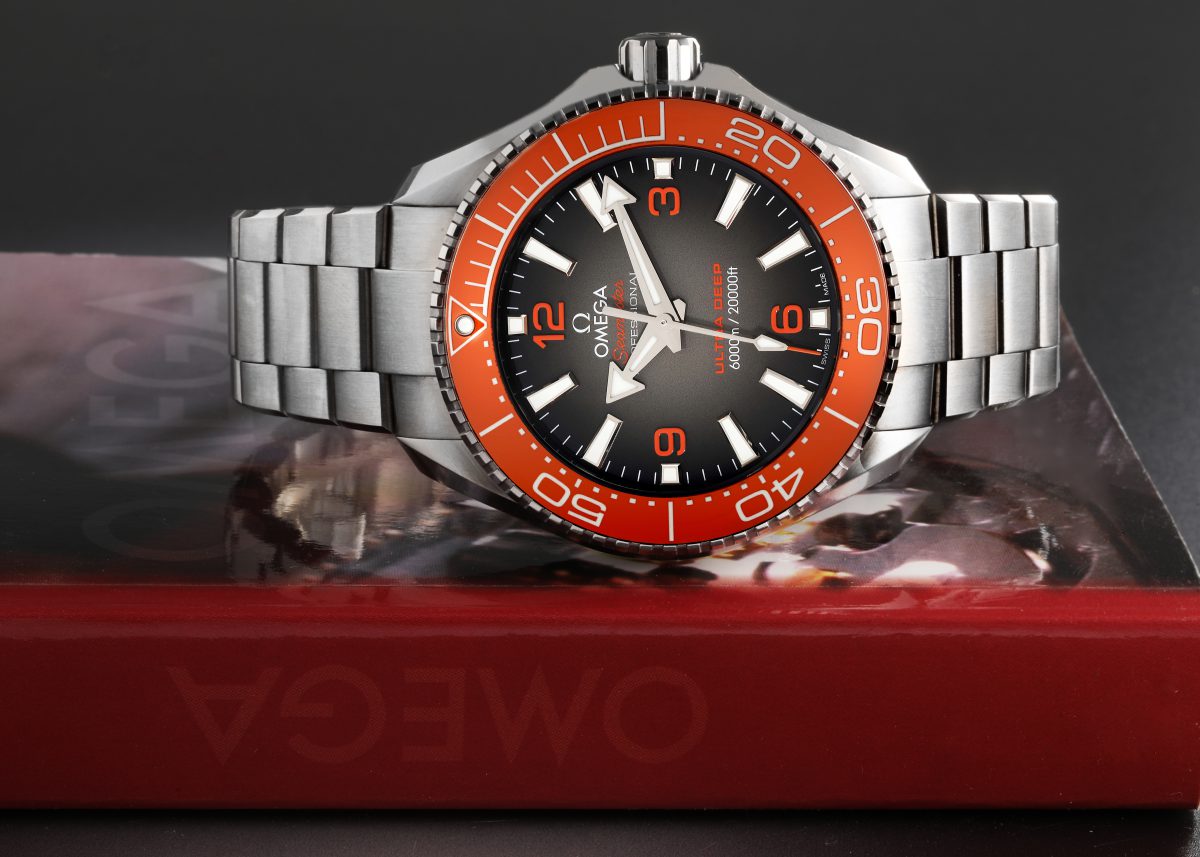
Water Resistance
Water resistance is a crucial feature in many watches, especially those intended for outdoor or water-related activities. The ability of a watch to withstand water exposure is measured by its water resistance rating, which indicates the depth to which a watch can be submerged without water entering the case.
While outside of the U.S. the term “waterproof” is used, the US Federal Trade Commission does not allow the use of waterproof. Even with advanced seals and gaskets, there is always a possibility of water seeping into the watch under certain conditions, such as extreme pressure or temperature changes. Therefore, using the term “water-resistant” is a more accurate representation of a watch’s capabilities and helps manage customer expectations.
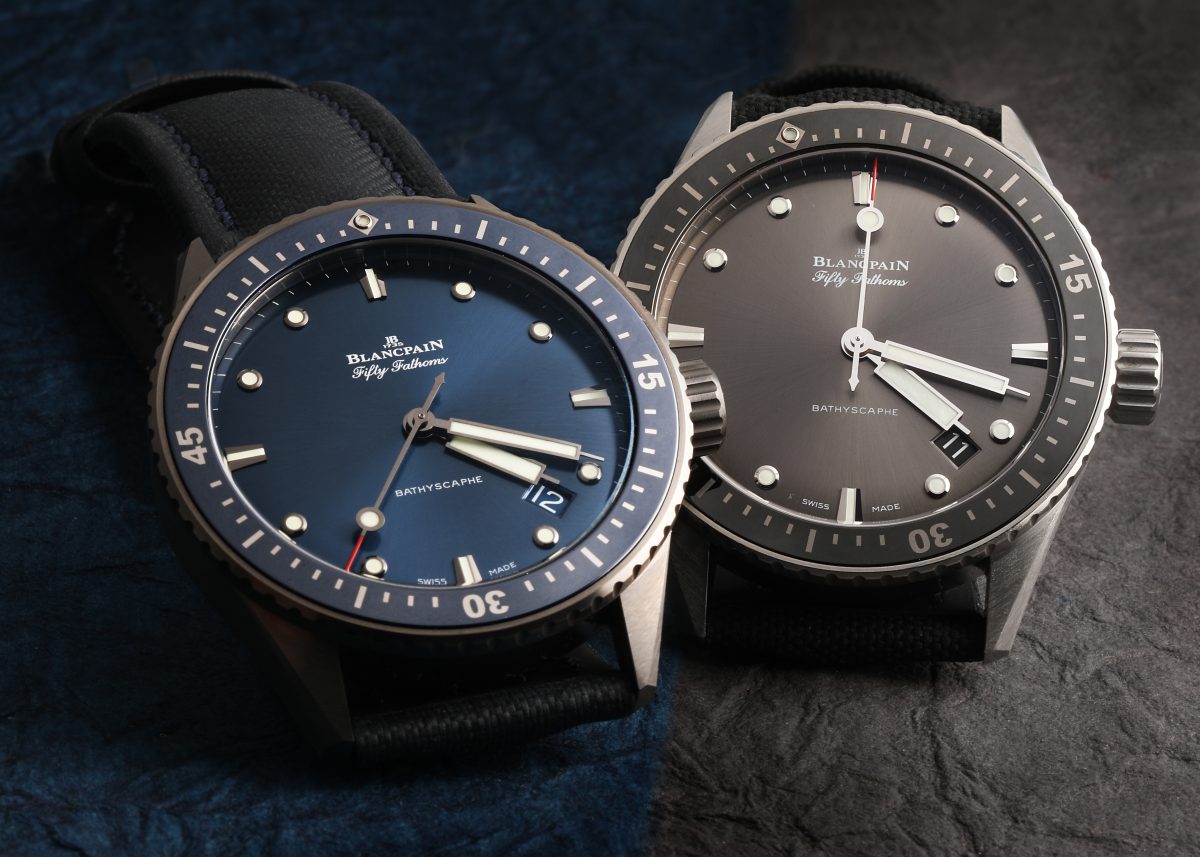
Read more: Water Resistant vs Waterproof Watches
Water resistance ratings are usually expressed in meters, feet, or atmospheres (ATM pressure). These ratings indicate the depth to which a watch can be safely submerged without water entering the case. It is important to understand that the indicated depth rating does not refer to the depth to which the watch can be taken underwater and still function properly. Instead, it represents the water pressure the watch can withstand under laboratory conditions.
For example, a watch with a water resistance rating of 50 meters does not mean it can be taken 50 meters deep into the water. Instead, it indicates that the watch can withstand the pressure equivalent to being stationary at a depth of 50 meters. Factors such as movement, temperature, and external forces can affect the actual water resistance of a watch, so it is recommended to adhere to the manufacturer’s guidelines and exercise caution when exposing a watch to water.
<>
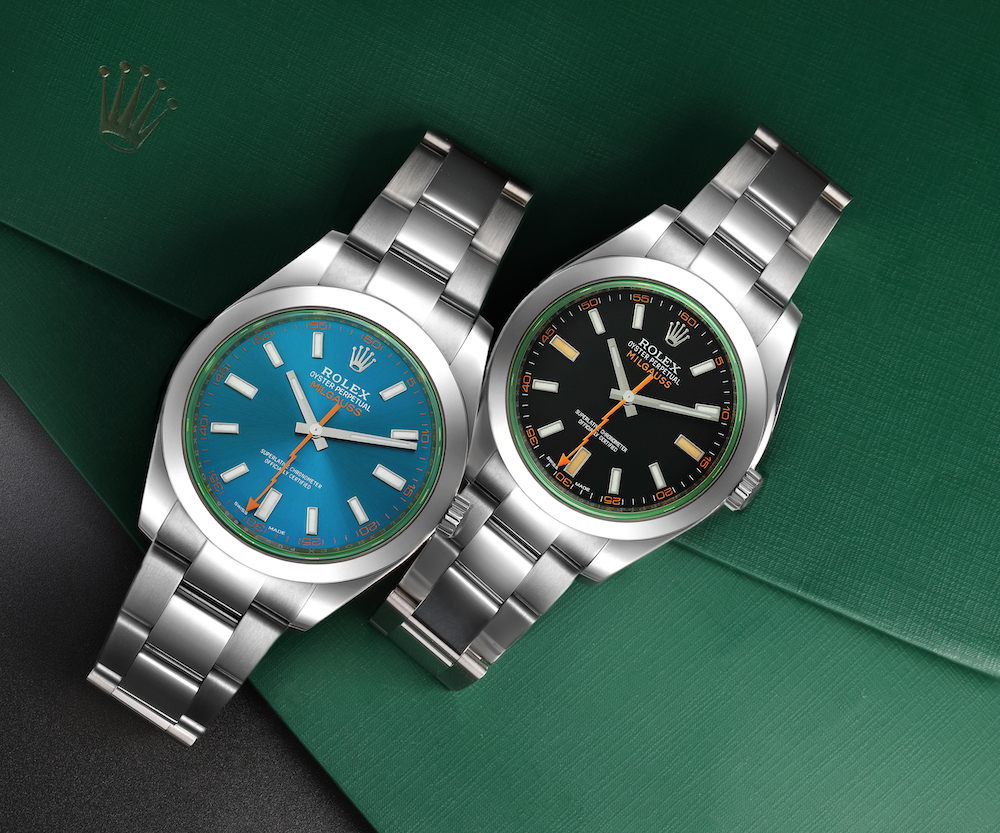
Shock and Magnetic Resistance
Watches are subjected to various environmental factors, including shocks and magnetic fields, which can affect their accuracy and functionality. To ensure reliable timekeeping, many watches are designed with features that enhance shock and magnetic resistance. Shock resistance features, such as shock absorbers and anti-shock systems, protect the delicate movement from damage caused by sudden impacts.
Magnetic resistance is achieved through the use of materials or shielding techniques that protect the movement from the negative effects of magnetic fields. These features help to ensure that the watch can withstand everyday shocks and magnetic interference, maintaining its accuracy and durability.
<>
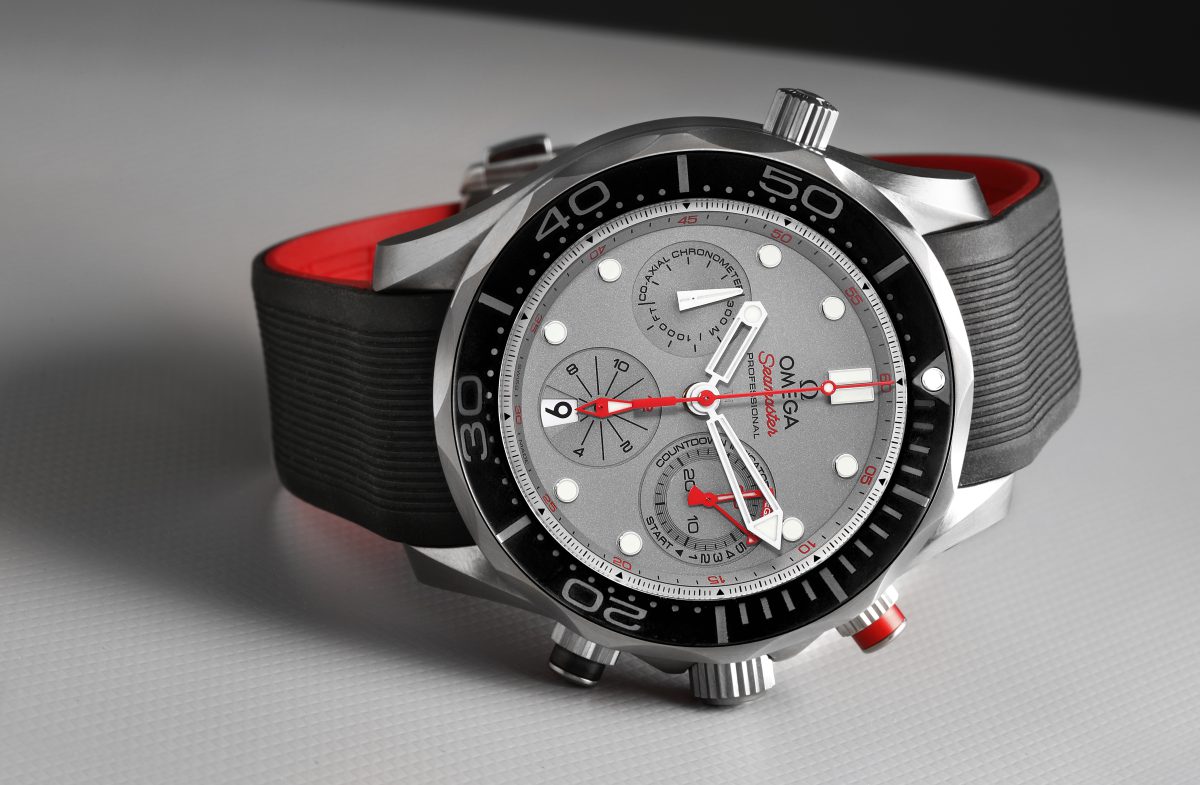
Helium Escape Valve
Helium escape valves are found in certain professional dive watches designed for saturation diving. During prolonged exposure to high-pressure environments, such as deep-sea diving or diving in a diving bell, helium molecules can penetrate the watch case. The helium escape valve allows the built-up helium to be safely released without damaging the watch during decompression.
This mechanism was premiered with the Rolex Sea-Dweller, the brand’s range of saturation diving watches. What Is a Helium Escape Valve and How Does It Work?
<>
Watch Anatomy 101: Final Thoughts
Understanding the watch anatomy allows for a deeper appreciation of the craftsmanship and functionality of mechanical timepieces. From water resistance to shock and magnetic resistance, each component plays a crucial role. Explore the world of watches further with trusted sources like SwissWatchExpo, a reliable destination for authentic, pre-owned luxury watches.
<>


